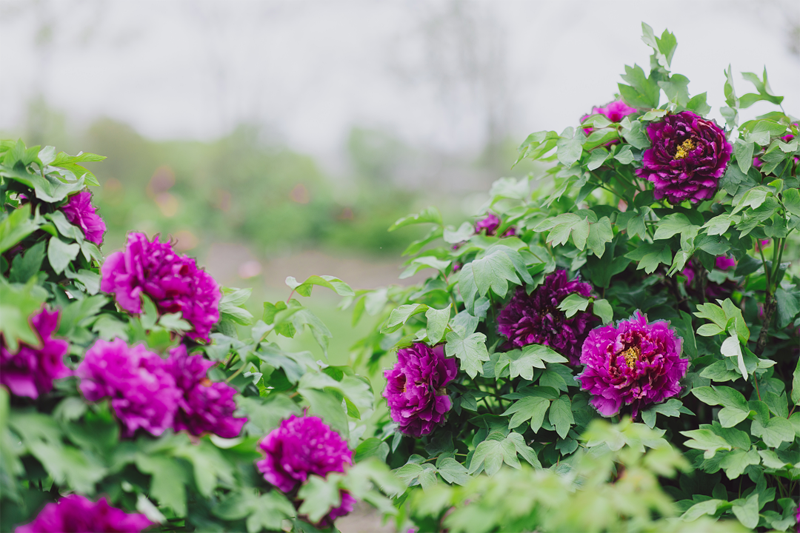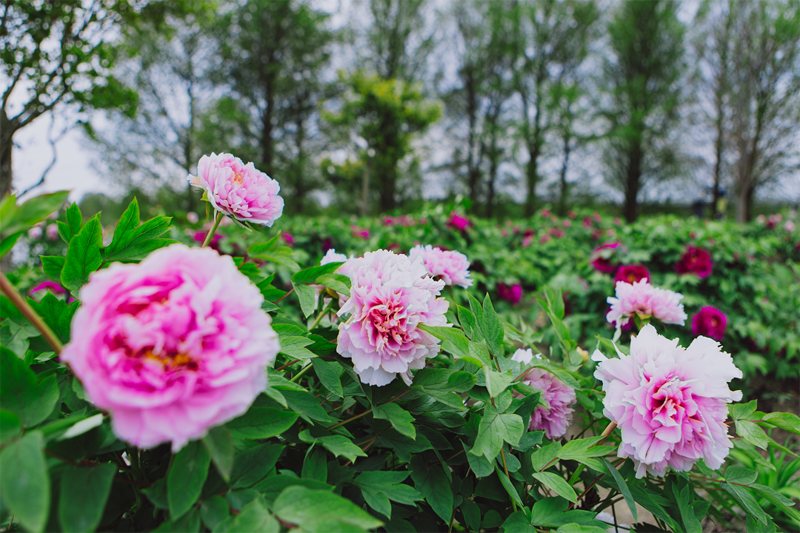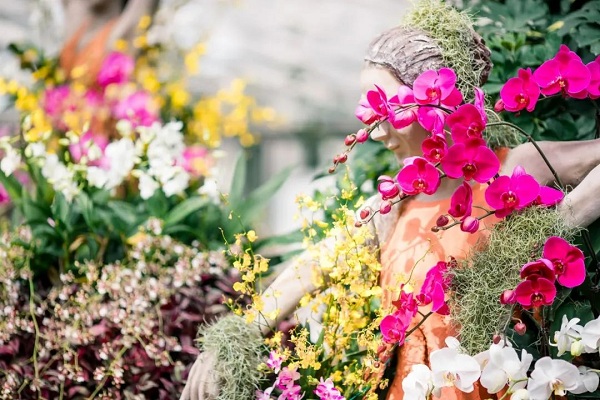
Bright as buttons, peony flowers are now in full bloom at the Shanghai Chenshan Botanical Garden. [Photo/WeChat account: sheshanlvyou]
Spring is now in full swing at the Chenshan Botanical Garden in East China's Shanghai, where peonies in a riot of colors are in bloom.
The first peony of the season opened its petals on March 16. The cold and rainy weather that followed for more than 10 days delayed the flowering of other peonies, which remained in their buds until recently.
But with the temperature rising, the best viewing period has finally arrived.
Chenshan's peony and Chinese herbaceous peony garden displays nearly 350 varieties of flowers – including more than 130 varieties of peonies and over 400 individual peony plants, as well as more than 170 varieties and over 1,000 plants of Chinese herbaceous peonies.
The garden is located in the core area of the botanical garden. It covers an area of 1.5 hectares and is enclosed by terraced, semi-natural terrain.
The peonies reached their best viewing period recently, which will last until early May. So, don't miss out!

Peonies are in full bloom at Shanghai Chenshan Botanical Garden. [Photo/WeChat account: sheshanlvyou]
Quick fact:
The Shanghai Chenshan Botanical Garden is located in the Shanghai Sheshan National Tourist Resort in Shanghai's Songjiang district and covers an area of 207 hectares, making it the largest botanical garden in East China.
The garden area used to be occupied by old residential compounds, rice-farming plots and a limestone cave before the local government decided in 2004 to make it a place to grow and study plants.
Today, Chenshan is a national 4A-level scenic spot and member of the international community of botanical gardens, as well as a leading facility dedicated to the collection, conservation and cultivation of plants in China.
It has a collection of more than 15,000 species and varieties of plants from 71 countries and regions, including some rare and endangered species. The plants are labeled with their names and identifying characteristics.


